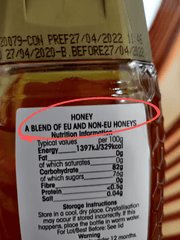Honey, a natural sweetener produced by bees, has been treasured for centuries not only for its sweetness but also for its nutritional benefits. However, not all honey is created equal. The differences between raw and processed honey are significant, influencing their nutritional profile, taste, and even their impact on health. This article dives into these differences to provide a clearer understanding of what sets raw honey apart from processed honey.
Nutritional Profile
Raw honey is known for its rich nutritional profile. It contains a variety of vitamins and minerals, including Vitamin C, calcium, and iron, though in small amounts. Additionally, raw honey is a source of antioxidants and phytonutrients, which are largely responsible for its health-promoting properties. These antioxidants can help in reducing inflammation and protecting the body against free radicals.
Processed honey, on the other hand, often loses much of its nutritional value due to the heating and filtration processes it undergoes during production. The high heat can destroy the delicate enzymes and beneficial compounds, leaving processed honey as a mixture of glucose and fructose, with significantly fewer health benefits.
In an article published in March by Theguardian, it was claimed that in 2022, the UK imported over 38,000 tonnes of honey from China, heightening concerns of potential adulteration with sugar syrup. 46% of sampled products suspected to be fraudulent and all ten UK honeys sampled failed the tests. Also it was claimed by Mail One that Chinese factories producing more honey than the entire global bee population.
Taste and Aroma
One of the most noticeable differences between raw and processed honey is in their taste and aroma. Raw honey is celebrated for its complexity of flavors, which can vary dramatically depending on the flowers from which the bees have collected nectar. It can range from fruity and floral to rich and woody, with several options in between.
In contrast, processed honey tends to have a more uniform and less pronounced flavor. The heating process alters the delicate aromas, leading to a simpler, often overly sweet taste with less depth. The distinct characteristics of the nectar sources are largely lost, resulting in a product that lacks the subtlety and richness of raw honey.
Production and Processing
The production of raw honey is straightforward: bees collect nectar from flowers and bring it back to the hive, where it is transformed into honey and stored in the honeycomb. When beekeepers harvest this honey, they simply extract it, strain it to remove any debris, and bottle it. This minimal processing helps to preserve the natural vitamins, minerals, and enzymes.
Processed honey, however, goes through several additional steps. After extraction, it is generally heated and filtered to remove impurities and extend its shelf life. While this makes the honey clear and smooth, it also strips away much of its nutritional content and natural flavor.
That’s why our honey undergoes strict lab testing to confirm 0% added sugar from C4 plants like corn and sugarcane. It's pure and free from additives. Nothing removed or added. Just the way nature intended.

Health Benefits
The health benefits of honey, particularly raw honey, are well-documented. Raw honey's antibacterial and antifungal properties make it a natural remedy for wounds and a booster for immune health. Its antioxidant capacity can also contribute to overall wellness. Moreover, raw honey's phytonutrients have been shown to have anti-inflammatory and cancer-fighting properties.
Processed honey, while still beneficial, offers fewer health advantages due to its reduced nutritional content. The pasteurization process, which involves high temperatures, diminishes its levels of enzymes and antioxidants. While it still retains some of its antibacterial properties, they are notably less pronounced than in raw honey.
Glycemic Index: Impact on Blood Sugar
The Glycemic Index (GI) of honey is another area of distinction. Raw honey generally has a lower GI compared to processed honey. This is attributed to the presence of more complex sugars and other components that slow down the absorption of glucose into the bloodstream. As a result, raw honey causes a more gradual increase in blood sugar levels, making it a slightly better option for individuals monitoring their blood sugar.
Environmental and Ethical Considerations
The production of raw honey tends to be more sustainable and bee-friendly. Small-scale beekeepers who produce raw honey often employ practices that prioritize the health and well-being of the bees. They are less likely to use harmful chemicals or antibiotics and often leave a sufficient amount of honey in the hive for the bees to survive winter.
On the other hand, large-scale production of processed honey can sometimes involve practices that are less sustainable and ethical. This includes overharvesting, the use of antibiotics, and replacing the harvested honey with sugar substitutes, which are not as nutritious for the bees.
Shelf Life and Storage
Processed honey has a longer shelf life due to its pasteurization process, which reduces the chance of crystallization and preserves the honey in a liquid state for a longer period. Raw honey, while it can crystallize over time, can easily be returned to its liquid state with gentle warming. The crystallization of raw honey is a natural process and does not indicate spoilage.
Conclusion
While processed honey is more uniform in taste and has a longer shelf life, it lacks the rich flavor profile and the full spectrum of health benefits offered by raw honey. Packed with a rich array of vitamins, minerals, enzymes, and antioxidants, raw honey offers superior health benefits, including enhanced immune function and anti-inflammatory properties. Its lower glycemic index is also better for blood sugar management. For those looking to maximize their intake of antioxidants and other beneficial compounds, raw honey is undoubtedly the superior choice.
However, it is crucial to source raw honey from reputable producers to guarantee its quality and purity. In this regard, Honeyngreens stands out as a trusted provider, offering pure, high-quality honey. With us, you can be confident in the authenticity and nutritional integrity of your honey.
References
Healthline (2023). All About Raw Honey: How Is It Different Than Regular Honey? Retrieved from https://www.healthline.com/nutrition/raw-honey-vs-regular

